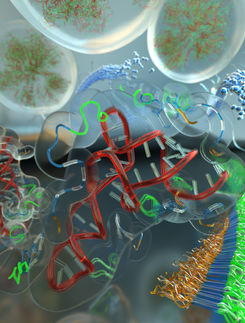Next generation of neuroscience tools
UAlberta chemistry professor Robert Campbell is developing new ways to see and manipulate the activity of neurons in the brain, which could revolutionize the way we understand the organ that controls most of the activities of the body.
"We want to help other researchers apply these new neuroscience tools to disorders ranging from chronic pain to brain injuries," said Campbell.
Looking inside the head
Campbell and his research group are developing tools to understand the inner workings of the brain in model organisms such as zebrafish, fruit flies, and mice.
"Right now, we have good methods for visualizing the electrical activity in the brain, but not for seeing neurotransmitters," said Campbell. Using natural fluorescent proteins, such as those in jellyfish and coral, neuroscientists will have new ways of seeing when and to what degree certain neurons are active.
As for manipulating brain activity, including the potential to implant memories, Campbell will be using a protein of his own creation.
"Using our photocleavable protein, we aim to make the connections between neurons either stronger or weaker using light, ultimately implanting certain associations, connections, and possibly even memories within the brain," he explained.
An invaluable toolkit
The tools are highly anticipated by Campbell's colleagues, including neuroscientists, researchers, and collaborators, from across the country. Their labs range in focus from developing models of depression and autism to understanding stroke and everything in between.
"These are the people who are putting the tools to use in health and health care research," explained Campbell. "Our lab is just creating new and better tools to allow them to do their job."
Campbell will receive $1M over the next seven years through the Canadian Institutes of Health Research Foundation Grant to develop the tools.
Most read news
Topics
Organizations
Other news from the department science

Get the analytics and lab tech industry in your inbox
By submitting this form you agree that LUMITOS AG will send you the newsletter(s) selected above by email. Your data will not be passed on to third parties. Your data will be stored and processed in accordance with our data protection regulations. LUMITOS may contact you by email for the purpose of advertising or market and opinion surveys. You can revoke your consent at any time without giving reasons to LUMITOS AG, Ernst-Augustin-Str. 2, 12489 Berlin, Germany or by e-mail at revoke@lumitos.com with effect for the future. In addition, each email contains a link to unsubscribe from the corresponding newsletter.





















































